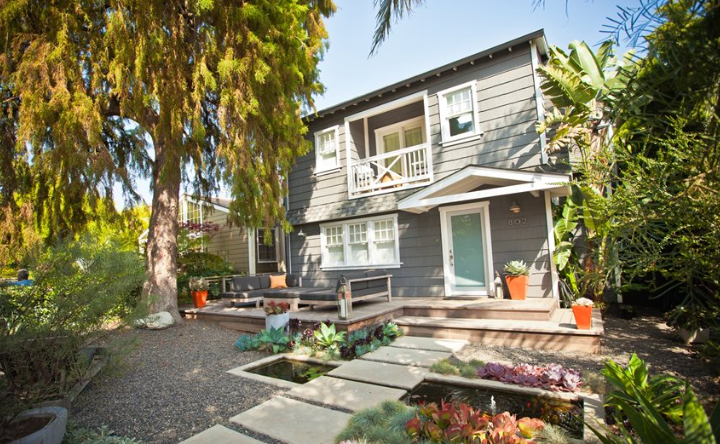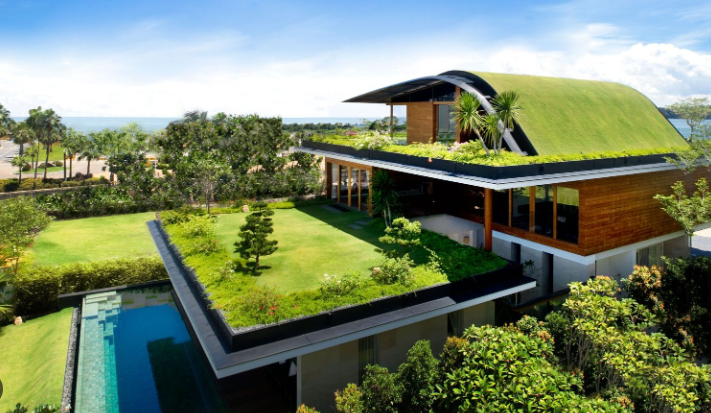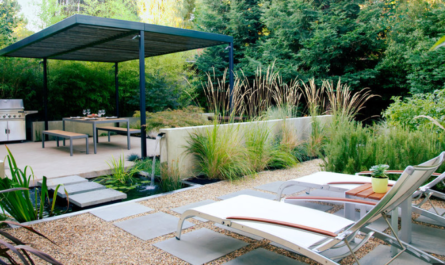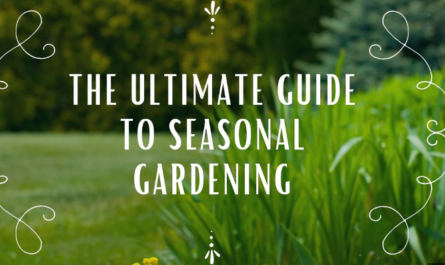In an era where environmental consciousness is at the forefront of global discourse, sustainable landscaping practices have emerged as a critical component of eco-friendly living. By adopting sustainable landscaping techniques, homeowners and gardeners can significantly reduce their environmental impact while creating beautiful, functional outdoor spaces. This article explores various eco-friendly practices that can transform your garden into a greener, more sustainable oasis.

Understanding Sustainable Landscaping
Sustainable landscaping involves designing, creating, and maintaining gardens and outdoor spaces in a way that is environmentally responsible. It encompasses a variety of practices aimed at conserving resources, reducing waste, and promoting biodiversity. The ultimate goal is to create landscapes that are not only aesthetically pleasing but also beneficial to the environment.
Key Principles of Sustainable Landscaping
1. Water Conservation
One of the most crucial aspects of sustainable landscaping is efficient water use. Traditional landscaping often relies heavily on irrigation, leading to significant water waste. Here are some strategies to conserve water:
- Drought-Tolerant Plants: Choose native or drought-resistant plants that require less water. These plants are adapted to local climate conditions and can thrive with minimal irrigation.
- Mulching: Apply a layer of organic mulch around plants to retain soil moisture, reduce evaporation, and suppress weeds.
- Efficient Irrigation Systems: Install drip irrigation or soaker hoses that deliver water directly to the plant roots, minimizing waste. Consider using smart irrigation controllers that adjust watering schedules based on weather conditions.
2. Soil Health
Healthy soil is the foundation of a sustainable garden. It supports plant growth, retains moisture, and promotes a diverse ecosystem of beneficial organisms. To improve soil health:
- Composting: Create compost from kitchen scraps and garden waste. Compost enriches the soil with organic matter, improves its structure, and provides essential nutrients to plants.
- Cover Crops: Plant cover crops like clover or legumes during the off-season. These crops prevent soil erosion, improve soil fertility, and enhance soil structure.
- Avoid Chemical Fertilizers: Use organic fertilizers and soil amendments. Chemical fertilizers can harm beneficial soil organisms and leach into groundwater, causing pollution.
3. Biodiversity
Promoting biodiversity is vital for a resilient and sustainable garden. A diverse range of plants and animals creates a balanced ecosystem, reducing the likelihood of pest outbreaks and enhancing pollination. To foster biodiversity:
- Native Plants: Incorporate native plants that provide habitat and food for local wildlife. Native plants are well-adapted to the local environment and require less maintenance.
- Pollinator Gardens: Designate areas for pollinator-friendly plants that attract bees, butterflies, and other beneficial insects. Include a variety of flowering plants that bloom at different times of the year.
- Wildlife Habitats: Create habitats such as birdhouses, bat boxes, and insect hotels to support wildlife. Provide water sources like birdbaths or small ponds.
4. Energy Efficiency
Reducing energy consumption in your garden can also contribute to sustainability. Consider the following practices:
- Solar Lighting: Use solar-powered garden lights to illuminate pathways and highlight landscape features. Solar lights are energy-efficient and reduce electricity usage.
- Efficient Equipment: Choose energy-efficient garden tools and equipment, such as electric or battery-powered lawnmowers and trimmers. Regular maintenance of tools ensures optimal performance and longevity.
- Shade and Windbreaks: Plant trees and shrubs strategically to provide shade and act as windbreaks. This can reduce the need for air conditioning in nearby buildings and protect plants from harsh weather conditions.
5. Waste Reduction
Minimizing waste is an integral part of sustainable landscaping. Here are some ways to reduce waste in your garden:
- Recycling and Reusing: Recycle garden waste, such as leaves and branches, by turning them into mulch or compost. Repurpose materials like old bricks, stones, and wood for garden structures and pathways.
- Grasscycling: Leave grass clippings on the lawn after mowing. The clippings decompose quickly, returning nutrients to the soil and reducing the need for fertilizer.
- Minimal Packaging: Choose products with minimal packaging or those packaged in recyclable materials. Buy in bulk to reduce packaging waste.
Sustainable Landscaping Techniques

1. Xeriscaping
Xeriscaping is a landscaping method that focuses on water conservation. It involves designing gardens with plants that require minimal water and implementing efficient irrigation systems. Key principles of xeriscaping include:
- Soil Improvement: Enhance soil quality to improve water retention and drainage.
- Efficient Irrigation: Use drip irrigation or soaker hoses to deliver water directly to plants.
- Mulching: Apply mulch to retain soil moisture and reduce evaporation.
- Drought-Tolerant Plants: Select plants that are adapted to dry conditions and require less water.
2. Permaculture
Permaculture is a holistic approach to landscaping that mimics natural ecosystems. It focuses on creating self-sustaining landscapes that require minimal external inputs. Key principles of permaculture include:
- Design for Resilience: Plan your garden to withstand environmental changes and disturbances. Diversify plant species to create a resilient ecosystem.
- Closed-Loop Systems: Utilize resources efficiently by recycling nutrients and energy within the garden. Composting, water harvesting, and integrating livestock are common practices.
- Zones and Sectors: Design your garden in zones based on the frequency of use and the specific needs of plants. Place high-maintenance plants closer to the house and low-maintenance ones farther away.
3. Edible Landscaping
Edible landscaping integrates food-producing plants into decorative garden designs. This approach not only enhances the aesthetic appeal of your garden but also provides fresh, organic produce. To create an edible landscape:
- Fruit Trees and Shrubs: Incorporate fruit-bearing trees and shrubs like apple, pear, blueberry, and raspberry into your garden.
- Vegetable Beds: Design attractive vegetable beds or raised planters that blend with your landscape.
- Herbs and Spices: Plant herbs like basil, rosemary, and thyme in borders, containers, or as ground cover.
4. Rain Gardens
Rain gardens are designed to capture and filter rainwater runoff from roofs, driveways, and other surfaces. They help reduce soil erosion, recharge groundwater, and improve water quality. To create a rain garden:
- Site Selection: Choose a low-lying area that collects runoff. Ensure it is at least 10 feet away from building foundations.
- Soil Preparation: Amend the soil with organic matter and ensure good drainage.
- Plant Selection: Use native plants that tolerate both wet and dry conditions. Examples include sedges, rushes, and certain types of ferns.
5. Living Roofs and Walls
Living roofs (green roofs) and living walls (vertical gardens) are innovative ways to add greenery to urban environments. They provide insulation, reduce stormwater runoff, and enhance biodiversity. To implement living roofs and walls:
- Structural Support: Ensure the building structure can support the additional weight of soil and plants.
- Waterproofing: Install waterproof membranes to prevent water damage.
- Plant Selection: Choose lightweight, drought-tolerant plants that can thrive in shallow soil.
Making the Switch to Sustainable Landscaping

Transitioning to sustainable landscaping requires careful planning and a commitment to long-term environmental stewardship. Here are some steps to help you get started:
1. Assess Your Current Landscape
Evaluate your current garden to identify areas where you can implement sustainable practices. Take note of existing plants, soil conditions, water usage, and waste generation.
2. Set Goals
Define clear goals for your sustainable landscape. Consider what you want to achieve, such as reducing water consumption, increasing biodiversity, or producing organic food.
3. Create a Plan
Develop a detailed plan that includes plant selection, irrigation systems, soil improvement strategies, and waste reduction methods. Consider seeking advice from a landscape designer or permaculture consultant.
4. Start Small
Begin with small, manageable projects to gradually transform your garden. For example, start by replacing a section of lawn with drought-tolerant plants or installing a rain garden.
5. Monitor and Adjust
Regularly monitor the progress of your sustainable landscape and make adjustments as needed. Keep track of water usage, plant health, and the presence of wildlife to ensure your garden is thriving.
Benefits of Sustainable Landscaping
1. Environmental Benefits
Sustainable landscaping practices help conserve natural resources, reduce pollution, and enhance biodiversity. By using less water, reducing chemical inputs, and creating habitats for wildlife, you contribute to a healthier environment.
2. Economic Benefits
While some sustainable landscaping practices may require an initial investment, they can lead to long-term cost savings. Efficient irrigation systems, reduced water bills, and lower maintenance costs can make sustainable landscaping economically viable.
3. Health Benefits
A sustainable garden can improve your physical and mental well-being. Gardening is a great form of exercise, and spending time in a green, natural environment can reduce stress and enhance mood.
4. Aesthetic Benefits
Sustainable landscapes are not only eco-friendly but also visually appealing. Native plants, diverse plantings, and well-designed garden features can create a beautiful and harmonious outdoor space.
Conclusion
Sustainable landscaping is more than just a trend; it is a necessary step towards a greener, more eco-friendly future. By incorporating water conservation, soil health, biodiversity, energy efficiency, and waste reduction into your gardening practices, you can create a sustainable landscape that benefits both you and the environment. Whether through xeriscaping, permaculture, edible landscaping, rain gardens, or living roofs and walls, the possibilities for creating


